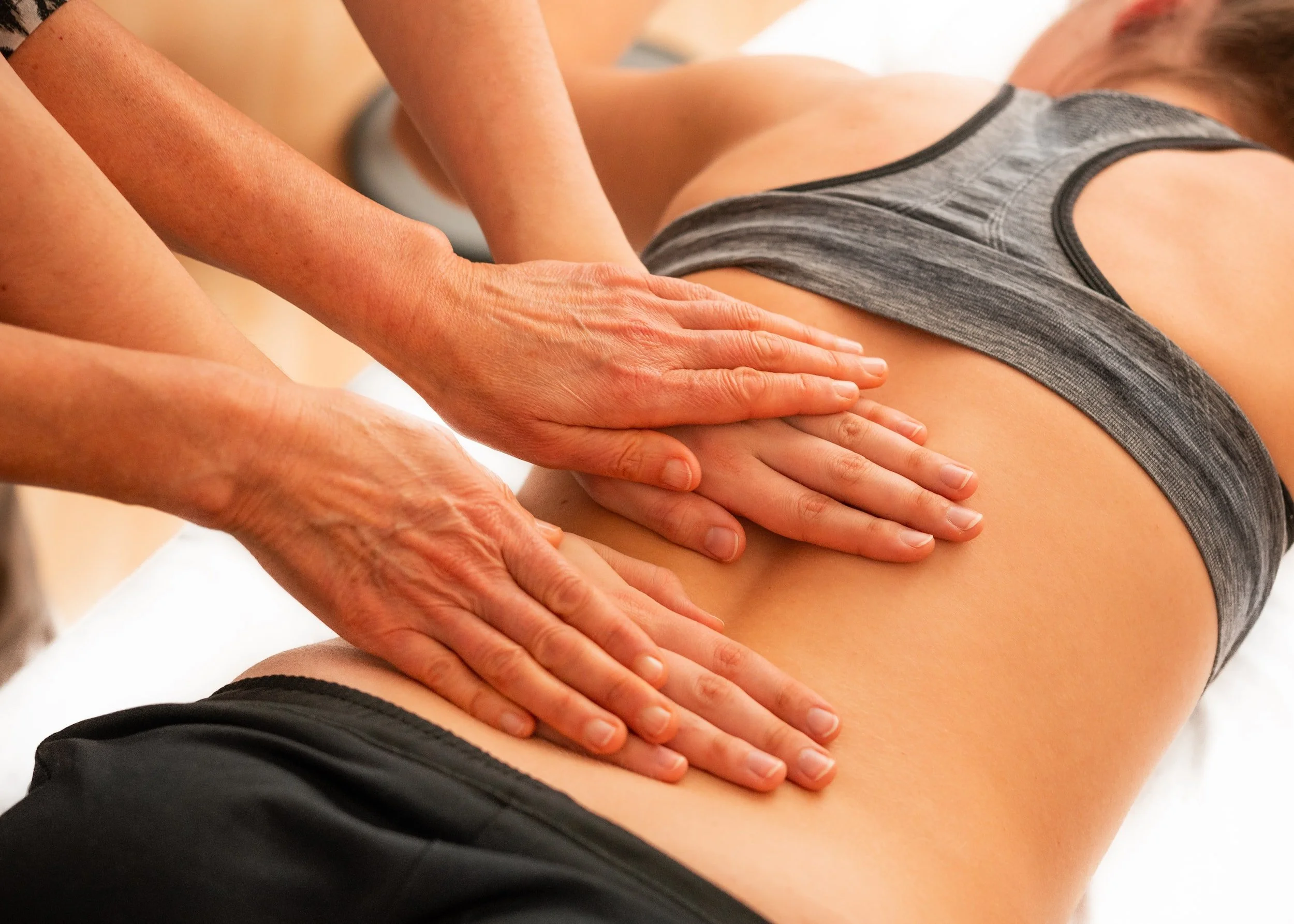The Benefits of Osteopathy
Osteopathy is a naturopathic healing art that operates under the philosophy that the body is fundamentally capable of healing itself from illness or injury without the addition of medicines or the removal or destruction of bodily tissues through surgery or other invasive intervention. While its focus is on a specific region or tissue, usually the source of the pain or ailment, osteopathy manipulates and strengthens the musculoskeletal framework of the whole body to treat a specific discomfort.
Osteopathy is a complementary therapy, like chiropractic care and therapeutic massages, that aids other treatments to do everything from manage hormonal changes during pregnancy to treating chronic pain. As a noninvasive, drug-free treatment option, it is rarely contraindicated with any other potential treatments. Thus, the key takeaway: Osteopathy does not result in surgical complications or potential addiction, and it can be safely practiced or discontinued more freely than with other treatments.
Osteopathy is performed by palpating or physically exploring the deep and surface tissues of the body with one’s hands, feeling for feedback in one’s back, shoulder, and joints. This is sometimes referred to as “listening.” A practitioner usually looks for specific qualities in the tissues being explored, such as congestion, density, dehydration, scarring, stiffness, loss of resilience, and “motility”. Motility is an infinitesimal quality of movement inherent to all living tissues, which informs the practitioner about those tissues’ underlying status or condition. This is an art that takes years of practice.
The most impressive benefits of osteopathy results from its versatility. Osteopathy can:
Manage Chronic Pain
Osteopathy is fundamentally a process which restores order to the body. As such, it can reduce discomfort from conditions like asthma, arthritis, and irritable bowel syndrome. While the treatment generally focuses on manipulating the musculoskeletal system, the benefits of osteopathy transfer into a variety of underlying tissues, including organs, as well.
By directly interceding into the flow of various fluids through the involved tissues, the body is encouraged to self-heal or to correct structural damages.
Osteopathy is especially useful in treating arthritis, back and neck pain, headaches, and damage to the tendons and ligaments following an injury (i.e. a sprain). As well as treating the underlying cause of chronic pain, osteopathy is helpful in reducing the strain on joints, improving posture, relieving tension, and dramatically increasing the range of motion without causing further stresses.
Ease Pregnancy
During pregnancy, hormonal and structural changes can cause a great deal of discomfort. Relaxing, for instance, causes the tendons of the feet to spread apart as well as the hips to change shape. This process is a necessary part of pregnancy, but can absolutely cause muscle tension, systemic stress, and ongoing discomfort. Osteopathic treatment is able to mitigate much of this bodily unease, and help to restore balance--even under duress.
Prevent Injury
Osteopathic treatments increase muscular flexion and resilience, thereby increasing range of motion and preventing tearing. Osteopathy is able to improve the resiliency of various tissues, making them less likely to suffer damage under stress. This is especially useful for athletes, physical labourers, persons who depend on repetitive motions (like typists, game players, or factory workers), and the elderly who are often more susceptible to stress-related injury.
Osteopathy can, in many cases, prevent further damage to an injured body part as well, while still shortening the recovery time and decreasing pain.
Aid Relaxation
Like massage or chiropractic adjustment, osteopathy is very much a hands-on treatment option. Skin-to-skin contact has been shown to increase dopamine levels, and promote relaxation and wellness. As well, by improving circulation, lymphatic flow, and vascular response, osteopathic treatment is an excellent way to assist in relaxation in a patient, during the healing process.
Osteopathy brings psychological benefits, too. The experience of being brought to that kind of physical relaxation invokes feelings of well-being and security in a patient, which have a profound effect on recovery from illness or injury.
Promote Fluid Flow
Osteopathy can increase circulation to better distribute nutrients and oxygen into the body, reduce blood pressure, decrease inflammation, restore lymphatic balance to increase bodily detox, treat sleep apnea, promote better sleep habits, and increase a feeling of overall wellness.
Osteopathic treatment is able to develop and support a better, healthier lifestyle, and patients are able to heal faster, and avoid further injury, discomfort, or illness, It’s a fantastic way to decrease tension, restore the body to its natural function, and increase healing.
Resources:
https://www.medicalnewstoday.com/articles/70381.php
http://insyncnaturalhealth.com/the-benefits-of-osteopathy/
https://www.naturesintentionsnaturopathy.com/osteopathy/benefits-of-osteopathic-medicine.html
https://www.activebeat.com/your-health/6-health-facts-and-benefits-of-osteopathic-care/
https://www.takingcharge.csh.umn.edu/explore-healing-practices/osteopathic-medicine
http://www.osteopathy-canada.com/manual-osteopathy-philosophy/
AUTHOR
Dr. Payal Bhandari M.D. is one of U.S.'s top leading integrative functional medical physicians and the founder of SF Advanced Health. She combines the best in Eastern and Western Medicine to understand the root causes of diseases and provide patients with personalized treatment plans that quickly deliver effective results. Dr. Bhandari specializes in cell function to understand how the whole body works. Dr. Bhandari received her Bachelor of Arts degree in biology in 1997 and Doctor of Medicine degree in 2001 from West Virginia University. She the completed her Family Medicine residency in 2004 from the University of Massachusetts and joined a family medicine practice in 2005 which was eventually nationally recognized as San Francisco’s 1st patient-centered medical home. To learn more, go to www.sfadvancedhealth.com.

